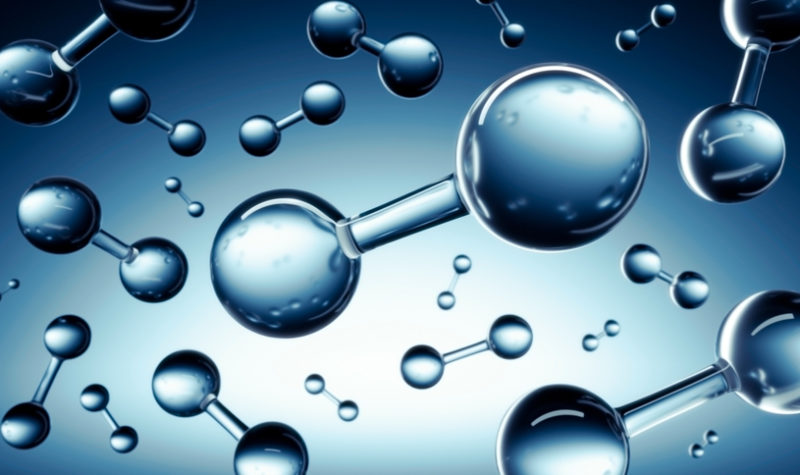Can Hydrogen and Nuclear Save Us?

On 3 October 2022, UK energy infrastructure company Carlton Power secured planning permission to build the UK’s largest green hydrogen hub.
Green hydrogen is hydrogen produced using renewable energy sources, such as wind and solar, rather than non-renewable sources, such as coal.
Hydrogen is an incredibly versatile and powerful energy resource. It can act as a storer of energy and can be transported as liquid or gas. It is produced in a number of ways, one being an environmentally friendly process known as electrolysis. The longer aim is hydrogen will be a reliable, green, energy source used to help to power homes, machinery and transport.
The Carlton Power hub, known as the Trafford Green Hydrogen scheme, worth £300 million, is expected to have an ultimate capacity of 200MW with an initial Phase One capacity of 15-20MW.
The hub will produce 100% green hydrogen for industry and transport operators in the Greater Manchester area.
Carlton Power also has plans to develop two other hydrogen hubs in Devon and Cumbria.
It is another example of companies pushing innovation in line with the UK government’s hydrogen strategy, which is seeking to achieve 10GW of green hydrogen energy production capacity by 2030.
The “strategy” explains that “Government investment in hydrogen to de-risk early projects could unlock over £4 billion of private sector co-investment up to 2030,” with up to 35% of the UK’s energy consumption coming from hydrogen.
Another key development in the UK hydrogen energy industry will see hydrogen injected into a gas-fired power station for the first time.
On 23 October 2022, energy provider Centrica announced that it will trial using hydrogen at its Brigg power station in Lincolnshire, as it seeks to reduce “carbon intensity” at its site.
The project, launching in the second half of 2023, will receive £8 million in government funding.
But these aren’t the only green energy plays currently in the works here in the UK.
Energy Gain Makes History
Nuclear energy is also burgeoning in the UK.
Also in late 2022, the government chose the site for the UK’s first prototype nuclear fusion reactor. After shortlisting five sites, it opted for the West Burton A plant in Nottinghamshire.
The plant is set to be built by 2040 and will be allocated government funding worth £220 million for the first phase.
The deal is significant, because it points to the commercial viability of nuclear fusion, which has so far been restricted to experimental phases.
However most notably on 5th December 2022, scientists and researchers at the National Ignition Facility in California made an historic breakthrough with nuclear fusion.
They were able to achieve what’s called “energy gain” meaning the ratio of energy produced in the reaction was greater than the energy input.
This world first proved that nuclear fusion generated energy isn’t just theoretically possible, but practically as well.
The difference between nuclear fusion (in development) and nuclear fission (what we use in nuclear plants today) is important.
In nuclear fusion, atoms are smashed together (fusion), rather than being split (fission).
Nuclear fusion releases around four times more energy than nuclear fission and comes with far less risk. Fission can produce radioactive waste, which can remain active for millions of years. Fusion is potentially the most environmentally friendly energy source ever.
Can The UK Lead The Future Of Energy?
However, even with the scientific breakthrough in December, fusion still remains unachievable on a commercial scale. But with multiple companies and governments around the world pressing hard for commercial fusion energy, and advancements making great leaps forward, it appears that it’s simply a matter of time until commercially viable fusion energy is achieved.
The West Burton A site also suggests that we really are moving closer to adoption of nuclear fusion energy in the UK.
It’s huge step forward for the UK’s energy goals and could potentially help achieve the government’s target of sourcing 25% of its electricity supply from nuclear power by 2050. The UK currently gets around 16% of its electricity supply from nuclear power.
Until then, nuclear fission is still one of the most environmentally friendly and energy rich options globally. And, in our view, it’s a necessity for energy security for countries around the world.
What is clear is that through hydrogen developments and nuclear technology there’s a lot of hope for a greener future as well as one with far greater energy abundance.
To find out more about the energy story nobody is telling you about, sign up to receive my briefing and access to the Fortune and Freedom newsletter for free.
Sam Volkering will be speaking at the Master Investor Show on the 15th of April.

Comments (0)